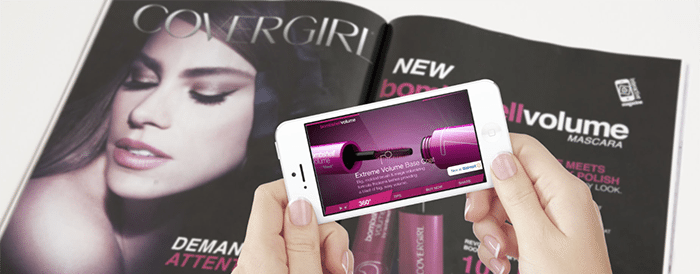
Hi! I’m Chloe! I know we are about to start show season and I should be jumping up and down about GraphExpo, labelExpo and the other cool shows, but I’m buried in an Augmented Reality project that is going sideways. Let me share what I’ve learned!
I started out, as many of us did, adding QR codes to collateral pieces to link back to web sites and sometimes to YouTube to add some zing and flavor. The challenge I had with QR codes was the need to know where I was going to land before I was ready! For most of my projects the design phase gets started early and goes through iterations on a parallel path to decisions about the customer engagement. Will it be a video, an offer on a landing page, a microsite or something else? Sometimes we don’t know when we start.
Even though there are some cool QR design tools and many projects can work with them, I started looking seriously at Augmented Reality to spice up a project. I thought I was pretty smart. The big difference in implementing an Augmented Reality Solution is that it can be done very late in the game. You can wait until you have your final approved design and identify a piece of the design as the trigger to launch the AR application.
My idea was to get the whole piece approved and select the cover image on my magalog to launch a video that would have some interactive components to it. The Interactive video team had their story board and their marching orders, so my job was to get the design locked down and reviewed for final approval. Then we would marry the trigger image to the video and off we would go. It sounded so easy. Then I came to understand that not everyone has the same definitions of AR.
First and foremost, if you are looking at these tools determine what the requirements are! I expected that an AR tool would work like Blippar or Aurasma – an unmolested image is the trigger and that image becomes the link to the next engagement. It turns out that there are other solutions out there, and some involve a process that adds information into an image and that managed image is the trigger. My team adopted one of those solutions, I didn’t realize it, and now I have to go back and have my cover image re-created with their digital marking.
But wait, it gets better! My cover image was a complex and colorful image and it turns out it doesn’t lend itself to accepting the new information and being read by the application. So now I go back to the drawing board to find a new image that will work.
We will get there and the end result will be spectacular, but it’s cost me about a month of re-working artwork and retesting because we weren’t all on board the same boat. So a word to anyone looking at Augmented Reality – it’s cool, but make sure everyone has all of the information they need to make it work! Ask a lot of questions about trigger images, and how the application matches the images to the intended engagement content. There are no stupid questions!
Until next time… Watch this space for more from the life of a Print Diva.
 Chloe Mahendra-Fuji practices the fine arts of design critique, content creation and editing, and communication consulting. She has decades of experience working in online content delivery, print delivery, and content development.
Chloe Mahendra-Fuji practices the fine arts of design critique, content creation and editing, and communication consulting. She has decades of experience working in online content delivery, print delivery, and content development.
Connect with Chloe: @ChloePrintDiva / [email protected]











